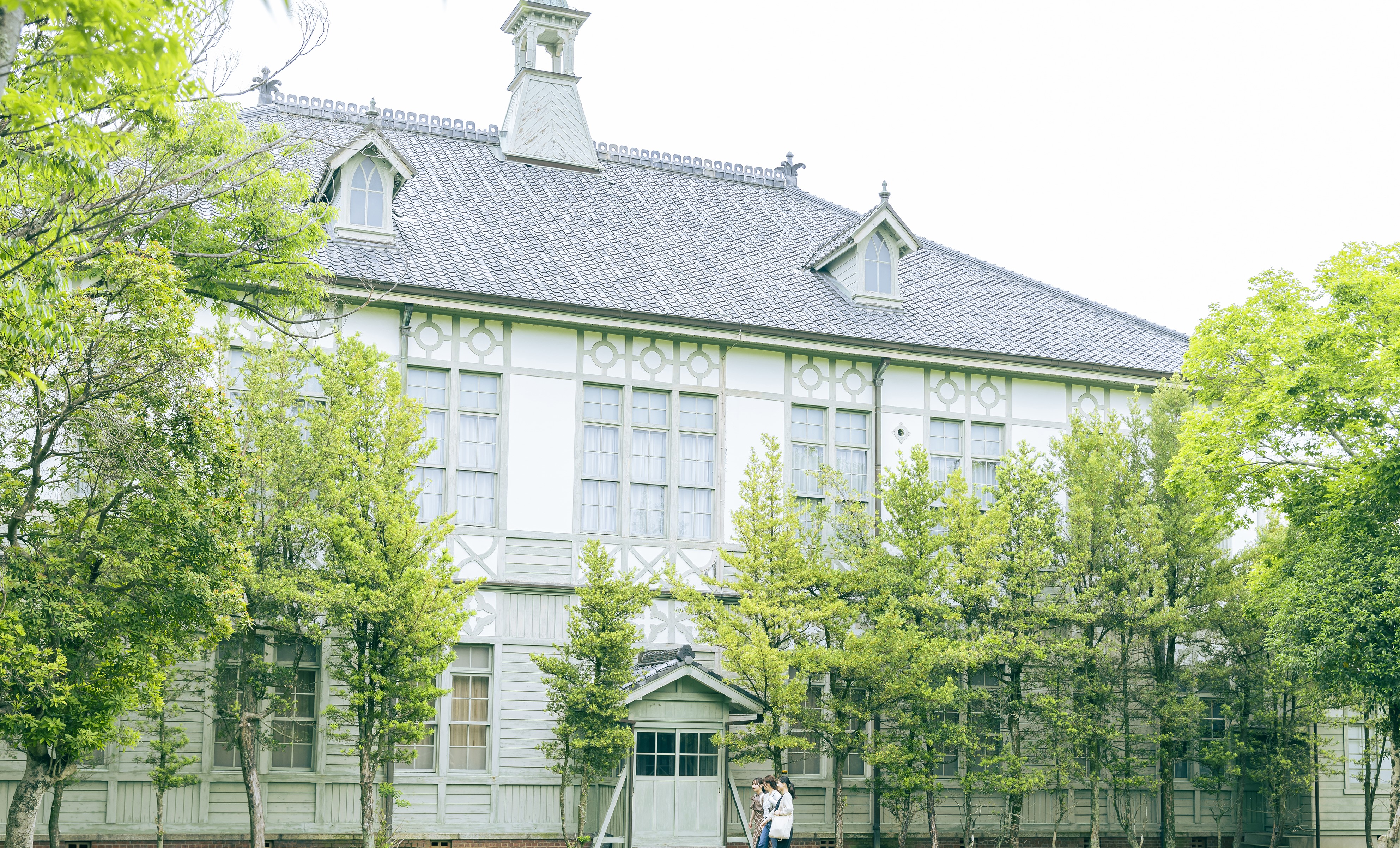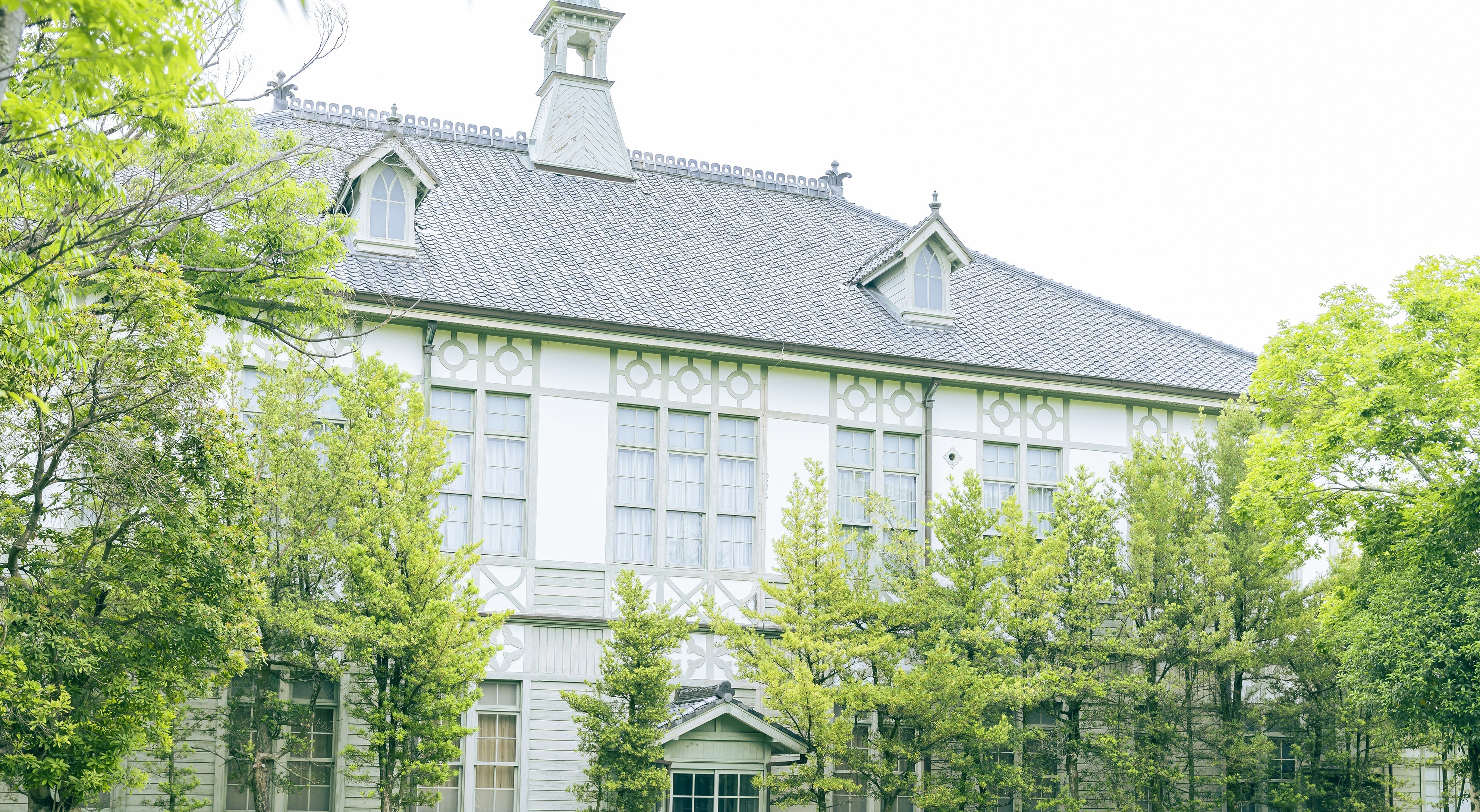

– Walking at the Forefront of the Era in which Women Play Active Roles –
Nara Women’s University has a unique trait: It offers a range of education programs for girls from the ages of 3 to 27
(from kindergarten children to graduate students). Considering that a significant portion of life is spent at school, it can
be said that humans are creatures that love to study. The university comprises the Faculty of Letters, a staple of the
women’s college; the Faculty of Science, which is unusual for a women’s college; and the Faculty of Human Life and
Environment, which is the only one of its kind found at a women’s college.
Nara Women’s Higher Normal School, the predecessor of Nara Women’s University, opened in 1909. The Imperial
Diet assembly voted in 1907 to determine where in the Kansai region to establish a second women’s higher normal
school. As it was a 131–131 draw between Kyoto and Nara, the chairman made the decision to establish it in Nara.
While Tokyo Women’s Higher Normal School was placed in the urban capital city, Nara Women’s Higher School was
placed in the ancient capital. It seems to have produced a very fateful role for us to play.
After defeat in World War II, our forefathers launched and devoted themselves to a campaign to upgrade the school to
a university. Due to the basic rule for establishing universities, the “one university per prefecture” rule, the school had
to be approved as an exception; the difficulties involved in this task were unimaginable, and we experienced several
teething troubles during the rebirth of the school.
The doctoral program was launched in 1980; however, this took four years from the planning stage. It had been a
strong desire for the university to have the capability to train their own doctoral candidates. Today, even though the
university has had to experience the troubles related to starting fresh for the third time, more than 500 graduate
students devote themselves to studies in the Graduate School of Humanities and Sciences.
Japan’s population has been decreasing since 2007. As the trend changes, conventional thinking falls short and the
opposite of common sense becomes true in many ways. In the past, values were drastically turned upside down during
the Meiji Restoration and World War II. According to the Science Council of Japan, a leading science organization in
Japan, a movement to give “science for the sake of society” the same status as “science for the sake of science” is
occuring today. At the same time, the voices that seek female leaders are becoming strong. As evident from its history,
the basic mission of Nara Women’s University is to develop female leaders. It is easy to say this in words; however, in
reality, there are various obstacles. The movement of work–life balance is the manifestation of that reality.
Nara Women’s University is located in the ancient capital of Nara, a place where nature is all around. Students come
from all over the country enjoy Nara and then return home. Studying in Nara is unlike studying in a metropolitan city;
it is more appropriate to learn how to walk at the forefront than how to run at the forefront. With this in mind, we
would like to take on the future with the same passion that our forefathers displayed.